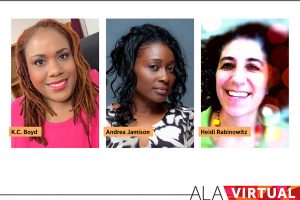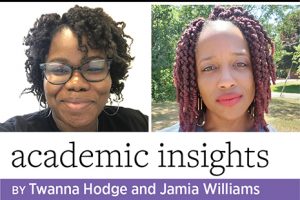
As part of my dissertation in 2020, I researched the collection development policies of academic libraries. I looked specifically at universities and colleges with American Library Association (ALA)–accredited LIS programs that offer master’s degrees or library programs with concentrations or career pathways in children’s services. It was important to situate this study within this context because these types of library programs provide the requisite skills and training needed for the selection and acquisition of children’s books. Academic libraries with children’s collections that support these types of programs can and should serve as models for collection practices. Library students who encounter these collections will have opportunities to gain insight that can be applied to their professional practice.
My study aimed to determine whether sampled policies had manifest messages of diversity and the degree of congruence between these policies and ALA’s “Diversity in Collection Development: An Interpretation of the Library Bill of Rights,” adopted in 1982 and last amended in 2019. Given that diversity is one of the core values of librarianship and extant literature shows that inequities persist in children’s literature, it was important to identify how certain libraries address diversity. Through policy examination, library workers can identify systems or practices that either perpetuate or mitigate systems of inequity.
Study results indicated that while sampled policies articulated messages of diversity, many lacked either specificity or embeddedness. Policies lacking specificity did contain the term diversity but lacked the presence of other words that would make the meaning clear.
Diversity is a broad term. It can be used to describe a multiplicity of differences, experiences, or identities. Some of the policies I examined contained broad diversity statements that allude to either a “diverse collection” or a “commitment to diversity.” However, these statements were too general to derive any real meaning from and did not mention the types of diverse materials or communities included in their collections.
To be fully understood, diversity has to be specified. For example, one library’s collection development policy stated: “Our collection focuses on women, diversity, and leadership.” No other words were used to help interpret the meaning of “diversity.” It could denote diversity of thought, political beliefs, or material format. It could also reflect a diversity of people in terms of race, ethnicity, religion, language, ability, age, or experience. Given the level of ambiguity here, it is not clear which elements exist within this library’s collection.
To be fully understood, diversity has to be specified.
I also examined policies that had clearer messages of diversity but wherein diversity was not embedded throughout the policy, meaning they often had a single statement of diversity that was siloed into one section. As an example, one policy’s vision statement mentioned diversity in terms of race, ethnicity, and language. The policy also named a specific racial group that was featured as part of a special collection. However, this message was relegated to only four sentences within the 39-page document. If diversity is invoked only in standalone phrases that do not recur throughout the document, that raises questions about its importance and effectiveness.
The goal of a collection development policy is to outline rules, protocols, or conventions that direct how collection practices should be carried out (Collection Development for a New Century in the School Library Media Center, Libraries Unlimited, 2002). Policies that have specific messages of diversity and incorporate those messages throughout will have more explicit guidelines for building library collections that are fair, equitable, and aligned with library standards and core values.
As academic librarians, if we are going to model equity, we must begin crafting inclusive policies that are explicit and extend beyond empty statements of diversity.


